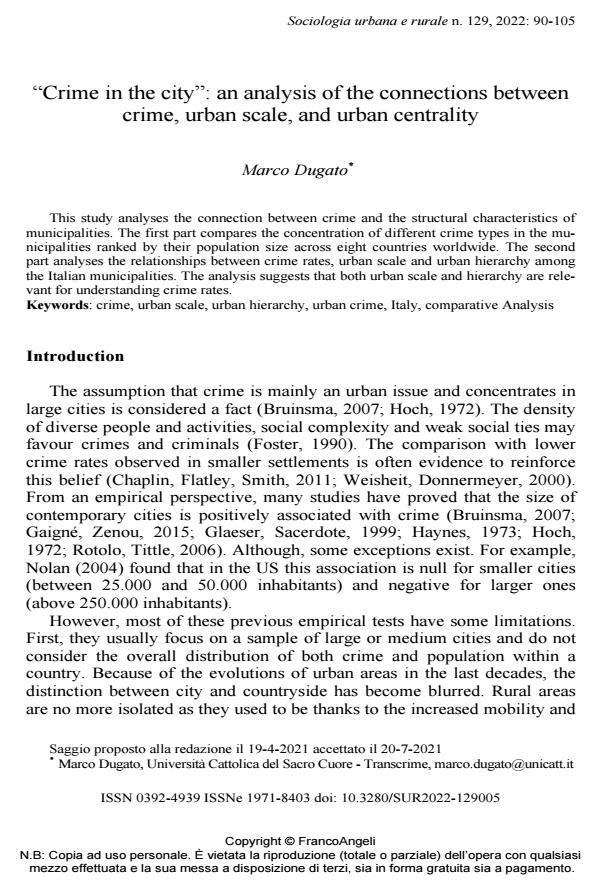"Crime in the city": an analysis of the connections between crime, urban scale, and urban centrality
Titolo Rivista SOCIOLOGIA URBANA E RURALE
Autori/Curatori Marco Dugato
Anno di pubblicazione 2022 Fascicolo 2022/129
Lingua Inglese Numero pagine 16 P. 90-105 Dimensione file 241 KB
DOI 10.3280/SUR2022-129005
Il DOI è il codice a barre della proprietà intellettuale: per saperne di più
clicca qui
Qui sotto puoi vedere in anteprima la prima pagina di questo articolo.
Se questo articolo ti interessa, lo puoi acquistare (e scaricare in formato pdf) seguendo le facili indicazioni per acquistare il download credit. Acquista Download Credits per scaricare questo Articolo in formato PDF

FrancoAngeli è membro della Publishers International Linking Association, Inc (PILA)associazione indipendente e non profit per facilitare (attraverso i servizi tecnologici implementati da CrossRef.org) l’accesso degli studiosi ai contenuti digitali nelle pubblicazioni professionali e scientifiche
This study analyses the connection between crime and the structural characteristics of mu-nicipalities. The first part compares the concentration of different crime types in the municipali-ties ranked by their population size across eight countries worldwide. The second part anal-yses the relationships between crime rates, urban scale and urban hierarchy among the Italian municipalities. The analysis suggests that both urban scale and hierarchy are relevant for un-derstanding crime rates.
Parole chiave:crime, urban scale, urban hierarchy, urban crime, Italy, comparative Analysis
Marco Dugato, "Crime in the city": an analysis of the connections between crime, urban scale, and urban centrality in "SOCIOLOGIA URBANA E RURALE" 129/2022, pp 90-105, DOI: 10.3280/SUR2022-129005